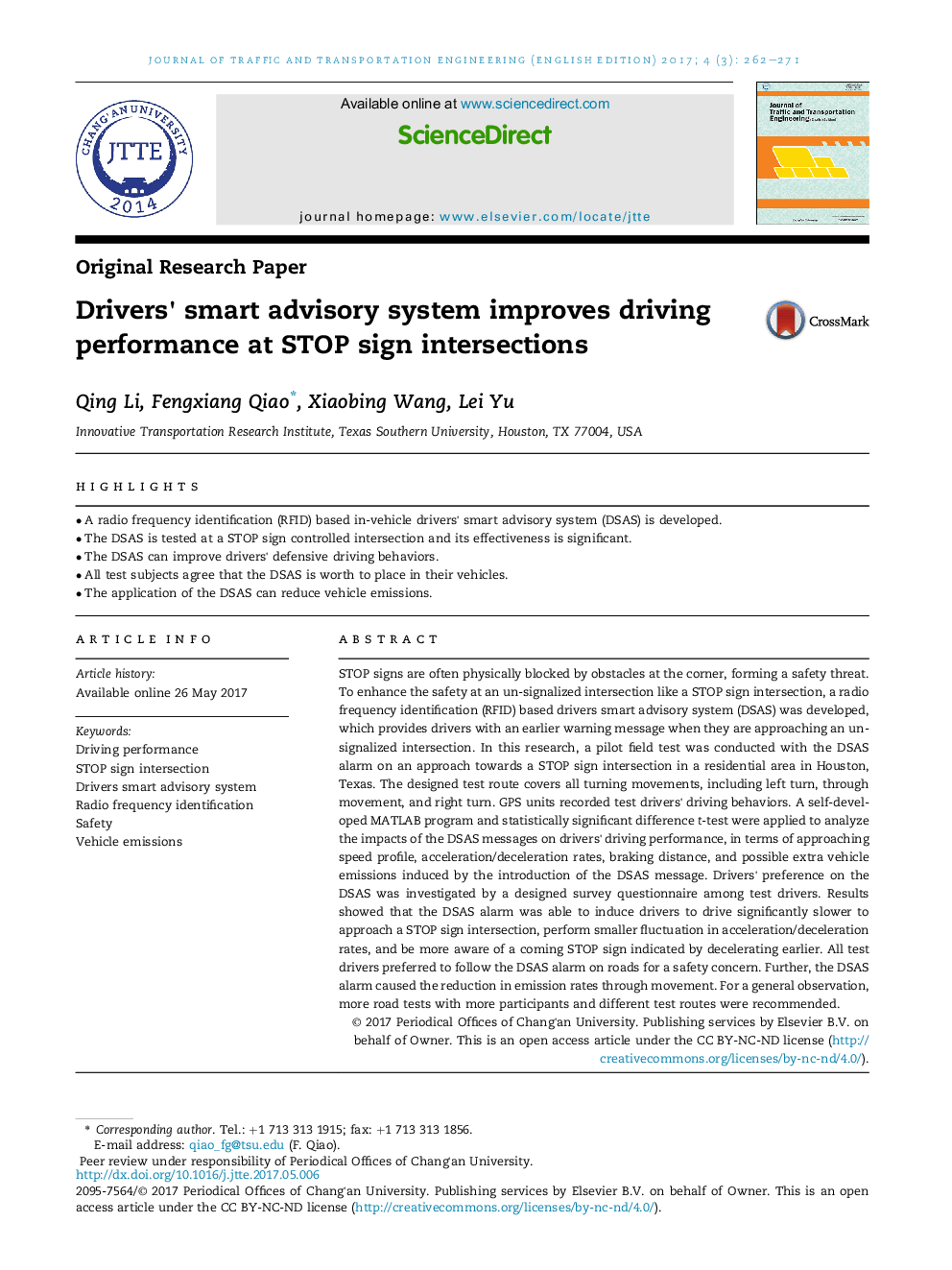| Article ID | Journal | Published Year | Pages | File Type |
|---|---|---|---|---|
| 4924645 | Journal of Traffic and Transportation Engineering (English Edition) | 2017 | 10 Pages |
â¢A radio frequency identification (RFID) based in-vehicle drivers' smart advisory system (DSAS) is developed.â¢The DSAS is tested at a STOP sign controlled intersection and its effectiveness is significant.â¢The DSAS can improve drivers' defensive driving behaviors.â¢All test subjects agree that the DSAS is worth to place in their vehicles.â¢The application of the DSAS can reduce vehicle emissions.
STOP signs are often physically blocked by obstacles at the corner, forming a safety threat. To enhance the safety at an un-signalized intersection like a STOP sign intersection, a radio frequency identification (RFID) based drivers smart advisory system (DSAS) was developed, which provides drivers with an earlier warning message when they are approaching an un-signalized intersection. In this research, a pilot field test was conducted with the DSAS alarm on an approach towards a STOP sign intersection in a residential area in Houston, Texas. The designed test route covers all turning movements, including left turn, through movement, and right turn. GPS units recorded test drivers' driving behaviors. A self-developed MATLAB program and statistically significant difference t-test were applied to analyze the impacts of the DSAS messages on drivers' driving performance, in terms of approaching speed profile, acceleration/deceleration rates, braking distance, and possible extra vehicle emissions induced by the introduction of the DSAS message. Drivers' preference on the DSAS was investigated by a designed survey questionnaire among test drivers. Results showed that the DSAS alarm was able to induce drivers to drive significantly slower to approach a STOP sign intersection, perform smaller fluctuation in acceleration/deceleration rates, and be more aware of a coming STOP sign indicated by decelerating earlier. All test drivers preferred to follow the DSAS alarm on roads for a safety concern. Further, the DSAS alarm caused the reduction in emission rates through movement. For a general observation, more road tests with more participants and different test routes were recommended.
